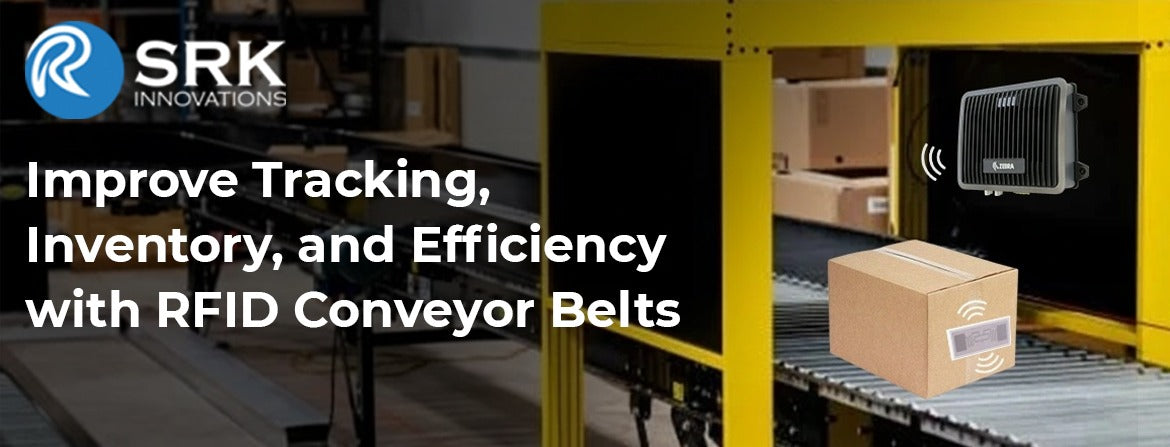
How RFID Conveyor Belt Systems Improve Tracking, Inventory, and Efficiency
- Barcode, NFC Business Cards, Pinter, POS System, RFID, smart cities
- 27 May, 2025
RFID conveyor belt systems are becoming a key part of modern warehouses, manufacturing units, and production hubs. These systems include RFID tags, readers, and gates placed along the conveyor belt to track and manage items automatically. The combination of conveyor belt technology and RFID ensures smooth item movement and accurate inventory tracking.
What Is an RFID Conveyor Belt System?
A conveyor belt system helps move items from one area to another using belts and pulleys. It’s widely used in warehouses, production units, and assembly lines. When combined with RFID (Radio-Frequency Identification) technology, this system becomes smarter and more efficient.
RFID conveyor systems—also called RFID tunnels—use RFID readers, tags, and antennas to scan items automatically as they pass by. This helps companies track products in real-time without manual scanning.
Key Components of RFID Conveyor Systems
- RFID Tags – Each item gets a tag with unique data (like item name or batch number).
- RFID Readers & Antennas – Installed along the conveyor belt to scan item data. A good option is the Zebra FX9600 Fixed RFID Reader with 4/8 antenna ports, paired with Zebra AN480 antennas.
- RFID Gates – These act as checkpoints, allowing or blocking items based on tag data.
- RFID Software – Tracks and shows item data in real-time. No manual work is required.
Benefits of RFID in Conveyor Belt Systems
1. Real-Time Tracking
RFID helps track every item as it moves, reducing lost items or misplaced inventory.
2. Better Inventory Management
Automated scanning makes inventory updates fast and accurate—no manual errors.
3. Higher Productivity
No need for manual checks. Items move faster, increasing work efficiency.
4. Error-Free Sorting
RFID ensures the right items reach the right place, helping with order accuracy and quality control.
Where RFID Conveyor Belts Are Used
1. Warehouses
Helps with quick sorting, routing, and shipping of goods.
2. Manufacturing Units
Tracks raw materials and in-process items to avoid delays.
3. Assembly Lines
Ensures correct parts reach the right station on time.
4. Production Hubs
Supports just-in-time inventory and improves overall material flow.
5. Airports (Baggage Handling)
RFID helps track luggage in real-time, reducing lost baggage. Many airports and airlines now use RFID to notify passengers about baggage status.
RFID Tagging in Conveyor Belt Manufacturing
Apart from moving items, RFID is also used to tag the conveyor belts themselves. This helps track production and sales. RFID tire tags and RFID spring tags are commonly used for this.
Srkinnovations.com offers RFID tire tags, spring tags, and RFID devices from top brands like Zebra, Impinj, and Chainway—available at competitive prices in India.
RFID has completely changed how conveyor belt systems work. With better tracking, inventory control, and reduced errors, RFID conveyor belt systems are essential for modern warehouses and production facilities. They help save time, reduce labor, and boost efficiency across different industries.










































